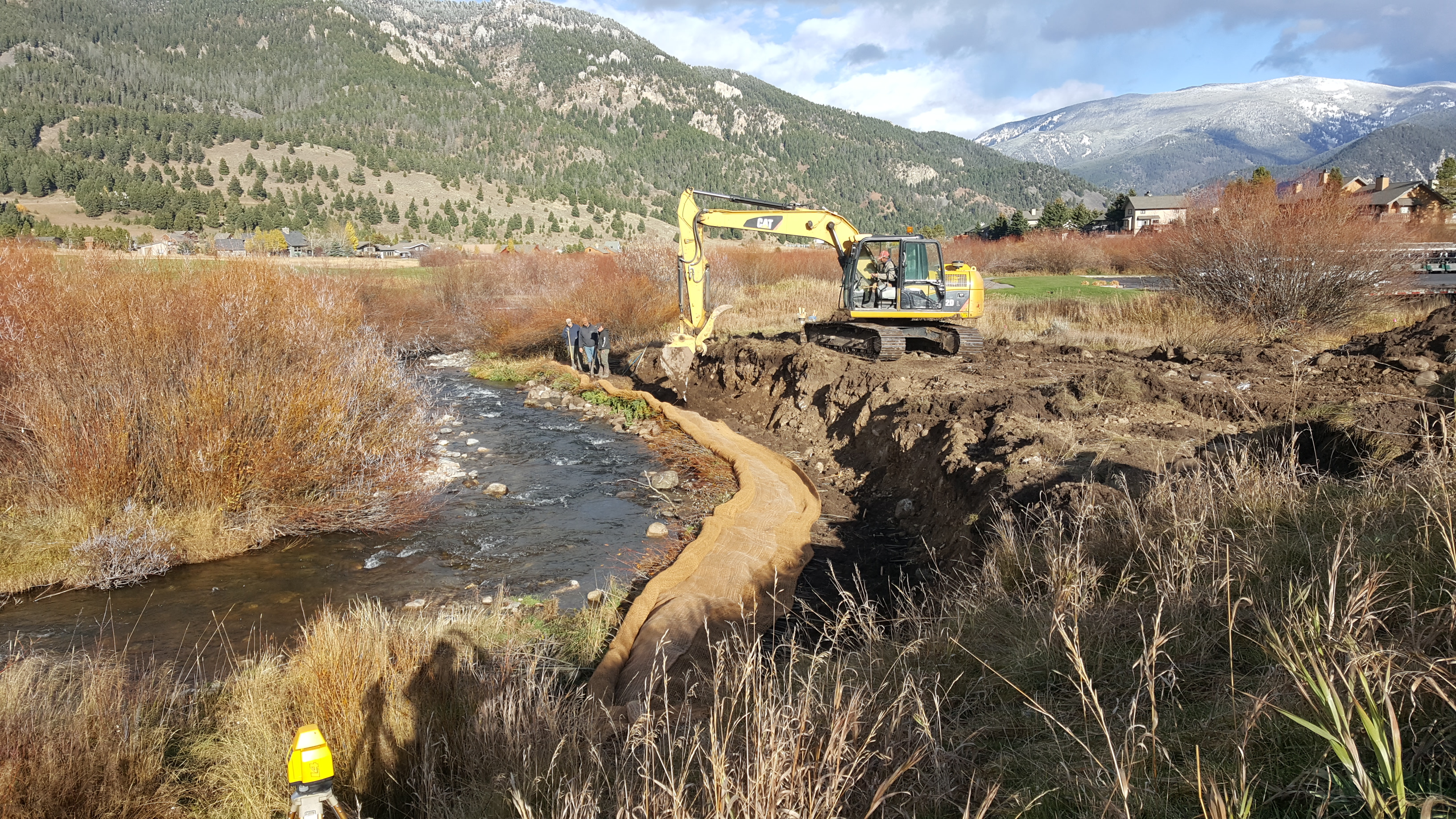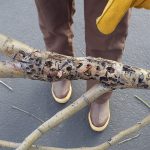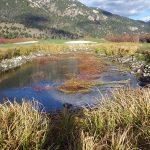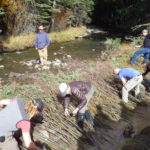The West Fork Restoration Project broke ground in October 2016 after three years of planning. The project utilizes native stream side vegetation to rebuild ecologically functioning stream banks along the West Fork of the Gallatin River.
Willows readily root from cuttings and naturally improve water quality. These water-loving plants utilize excess nutrients in runoff and hold streambanks together with their complex network of roots.
The West Fork Restoration Project requires thousands of willows. Vertical “stakes” will be planted to enhance wetland areas and anchor bioengineering materials while horizontal “layers” will be installed directly into the rebuilt stream banks to stabilize soil as they establish roots.
Here are some willow collecting tips to increase survival rate and project success:
- Know your willows. Willows have the highest survival rate when harvested locally. Nearby plants are already adapted to local climate and soil conditions. In addition, species such as: sandbar or coyote willow (Salix exigua), booth willow (Salix boothii), yellow willow (Salix eriocephala, S. lutea), and geyer willow (Salix geyeriana) have the highest survival rates. Luckily, all of these species are present and abundant along the West Fork.
- Harvest dormant plants. Dormant willows divert energy from leaf production to root production. For this reason, they are more likely to successfully root from a cutting. The dormant season extends from leaf drop in the late fall/early winter to bud break in the early spring.
-
- Cindy and Cathy identified this plant as a geyer willow before harvesting it.
- Frost-covered, dormant willows growing along the West Fork.
- Unsuitable cutting with a disease known as a canker.
- Katie demonstrating exemplary pruning technique, while removing the apical bud.
- Willow bundles soaking in the water feature on the Big Sky Golf Course.
- Willow layers placed with their “toes” in the water and their “heads” in the clouds.
- Size matters. The size of cuttings depends on the application or use. No matter where you plant cuttings, you want your willows to have their “toes” in the water and their “heads” in the clouds. In general, willow stakes should be about four to five feet tall and willow layers should be six to eight feet tall. Ideally, cutting are thumb-sized or bigger (somewhere between ¾ and 1 ½ inches in diameter).
- Choose wisely. Projects like the West Fork require tons of willows (we’ve used about 5,000 already), but not just any cutting will do. Healthy plants that are two to seven years old with smooth bark are ideal. Cuttings should be straight with the side branches, apical bud, and top several inches removed.
- Don’t forget to bundle and soak. Once cuttings are harvested and pruned, bundle them into groups of 10 to 20 with twine. Ideally, cuttings should be soaked in water seven to fourteen days prior to installation. Soaking willows keeps the cuttings from drying out after being planted and encourages early root growth.
For more information, attend a willow harvesting training with the Gallatin River Task Force or stop by our office to review a copy of “Willow Identification, Harvesting, and Planting Techniques for Riparian Restoration” a handbook created by the Cindy Hoschouer and Cathy Seibert, TREK Consulting.
Happy Harvesting!
The West Fork Restoration Project was funded by the Montana Department of Environmental Quality and the Big Sky Resort Area Tax District.







